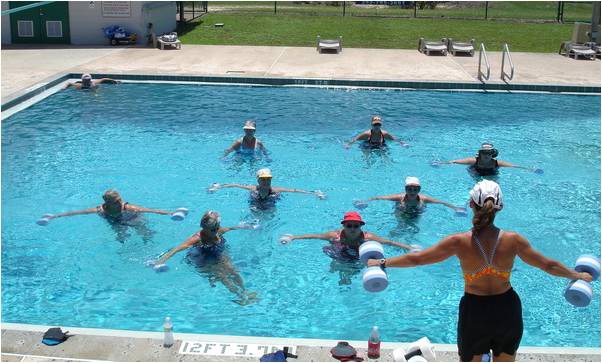Exercise for Diabetic Patients

As you may already know Diabetes is referred to as a “lifestyle disease”. One of the reasons contributing to the condition is sedentary living. Regular exercise and undertaking physical activities of one’s choice can play an important role in Diabetes management.
Research indicates that people living with Diabetes, who undertake some form of regular physical activity or have an exercise routine not only have a better control over their blood sugar levels but are also better able to handle the stress
According to Prof. Sheri Colberg-Ochs, PhD at Old Dominion University, Virginia, USA, physical activity can aid in Insulin secretion and keeping the blood glucose level in control. Working out regularly also keeps a check on obesity and movement coordination, as according to research, people living with Diabetes are prone to dis-balancing and falling. Falling down may further lead to conditions such as fractures and restricted locomotion, which can add to unwanted stress and pain in people living with Diabetes.
The good news is that exercises do not necessarily have to be necessarily boring and monotonous. You can invite friends and family to try out new activities and routines with you.
Exercise Tips
Water Aerobics

Muscle toning exercises in water are one of the best ways to beat the heat in the summers. One can try it in the pool with the entire family. Check out the places where you can try water aerobics in Delhi/NCR in our website and have fun with your family.
Swimming

Swimming stretches and relaxes your muscles and doesn’t put pressure on your joints, which is great for people with diabetes. For those with diabetes or at risk for developing diabetes, studies show it improves cholesterol levels, burns calories and lowers stress levels. To get the most benefit from swimming, we recommend that you swim at least three times a week for at least ten minutes and gradually increase the length of the workout. Make sure to have a snack and monitor blood sugars. Lastly, let the lifeguard know that you have diabetes before you get in the pool.
Tai Chi

It is a Chinese form of exercise, which uses slow & smooth body movements to relax the mind and body. In 2009, researchers at the University of Florida studied 62 Korean women assigned to one of two groups
a) Control group and an exercise group that began a regular practice of Tai Chi.
b) people who practised some other physical activity. Those who completed the tai chi sessions showed significant improvement in blood sugar control. They also reported increased vitality, energy and mental health.
Frog leaps/ Spot jogging

Are you bored and tired of going to the gym but miss the running/cardio and the treadmill? Try spot jogging with music on and then jump with a squat (frog leaps). It is believed to be extremely beneficial in toning and strengthing muscles. You are advised not to do it if you have arthritis, knee and foot problems.
Power Yoga

A traditional form of exercise mixed with latest strengthening postures, power yoga incorporates fluid movements that build flexibility, strength and balance. It is helpful for people with a variety of chronic conditions, including diabetes. It lowers stress and improves nerve function, which leads to an increased state of mental health and wellness. According to the ADA, power yoga may improve the blood glucose levels due to improved muscle mass.
Zumba

A unique form of strengthening work out which elevates your heart rate and the best part about doing Zumba is it is done along with catchy beats. Zumba burns up to 500 calories but it is not advisable for people with arthritis, knee and foot problems.
Various other dancing forms

Dancing is not only great for your body. Various forms like Salsa, contemporary, hip-hop, freestyle are the unique way to de-stress also. The mental work to remember dance steps and sequences actually boosts brain power and improves memory. For those with diabetes, it is a fun and exciting way to increase physical activity, promote weight loss, improve flexibility, lower blood sugar and reduce stress. Chair dancing, which incorporates the use of a chair to support people with limited physical abilities, makes dancing an option for many people. In just 30 minutes, a 150-pound adult can burn up to 150 calories.
Bhangra

A leading endocrinologist Doctor Sanjay Kalra recommends Bhangra a popular dance form which has originated from Northern India but practised worldwide. A 45-minute Bhangra performance regime can burn out up to 600 calories, and also help you lower your blood sugar levels and check on obesity.
Fun Activities With Family
Water Workouts

Water workouts stretch and relaxes your muscles and doesn’t put pressure on your joints, which is great for people with diabetes. For those with diabetes or at risk for developing diabetes, studies show swimming and water exercises such as aqualates, aqua aerobics, aqua yoga improves cholesterol levels, burns calories and lowers stress levels.
Cycling

Cycling is a recommended sport for people living with diabetes, it can be conducted either at your own pace or at a set distance which challenges your aerobic endurance by helping you burn calories and keep your glucose levels under control. Research suggests that if you cycle for 45-60 mins a day, this will help you achieve your physical activity targets in keeping a check on your blood glucose levels. People with diabetes must check their glucose levels before beginning cycling and must not cycle in rocky and unstable terrain to avoid falls and wounds.
Adventure

To break the monotony of the fast-paced city life, and lifestyle people with diabetes may choose to opt for something adventurous like adventure theme parks, visit adventure places, or enjoy the thrill of flying a Cessna and paragliding. Trekking and camping can be also a very exciting way to burn calories as well as enjoy a family trip. This list is not exhaustive; you can recommend your way of breaking the monotony and add to our list. However, people living with diabetes are recommended to check few things while opting for adventurous holidays and recreations.
Laughing activity clubs

Scientific studies confirm stress and diabetes have a direct connection; stress often leads to erratic glucose levels. To keep the stress under control one of the easiest ways is joining a laughter club. Laughter helps keep diabetes under control and it is similar to “exercising”. Laughter improves the overall performance of the heart’s muscular function and helps ward off cardiovascular disease and lower blood glucose levels.
Running Clubs

Running can improve your health and help with losing weight in an extremely manageable way for people with diabetes, while providing immense satisfaction and reward in the process.
Running can be the ideal form of exercise for people with diabetes as it helps the body’s sensitivity to insulin. This can be especially useful for people with type 2 diabetes to help combat insulin resistance.
To read more on Diabetes, click on the link below.





